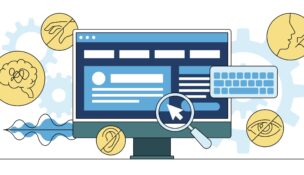Building a Company Culture of Care
Talent attraction and retention is always good business, and companies that build a culture of care today are best positioned to win the talent and retention wars of tomorrow.
Liddy Romero //August 30, 2022//


Building a Company Culture of Care
Talent attraction and retention is always good business, and companies that build a culture of care today are best positioned to win the talent and retention wars of tomorrow.
Liddy Romero //August 30, 2022//
From the Black Lives Matter movement to the crisis in Ukraine to gun violence in U.S. communities, companies big and small are being judged more than ever on how much (and how well) they care. This mandate to care is distinct from, yet often conflated with, the business world’s current obsession: purpose. Yet in today’s climate, a company with a strong purpose but poor demonstration of care for human suffering (whether at the company, community, or global level) risks not only losing consumer support but employee support as well.
Recent research, and our own work with frontline employees, underscore the benefits of an employee experience that emphasizes a culture of care across all levels of an organization. As Alan Saks, Professor of Management at the University of Toronto writes, “while there are many definitions of what it means to care for employees, at its core it involves an awareness of and concern for employee’s needs and well-being.” This feeling of care —a caring organizational climate—is positively related to job satisfaction, organizational commitment, organizational citizenship, job performance and well-being.
READ — 5 Tips for Building a Strong Company Culture in a Hybrid Work Environment
CEOs, HR leaders and managers all have a role to play and can start with the following three questions and practice changes:
1. Do you really know your workforce?
Every year we survey the predominantly frontline workers who utilize the services of our social enterprise. In 2021, as in past years, the challenges they faced were significant. Homelessness, illness, loss of family members, debt and mental health struggles topped the list of struggles workers brought to our team and carried with them to work. When we report back to employers with our data, we are often surprised by the reactions:
- Many HR leaders are unaware of the nature and extent of their employees’ needs and resource challenges.
- Employee benefits are not regularly evaluated for their impact on employees and the extent to which the benefits contribute a culture of care. Utilization data is often the only metric used.
- The role mid-level managers play as “first responders” when frontline employees struggle is often unrecognized and overlooked as an important source of insight despite the fact that when care is exhibited at the managerial level, it creates positive feedback loops, amplifying care within and even beyond an organization’s walls.
Build your understanding of your workforce with overlooked tools
- Data from your employee benefits investments are a great place to start. Ensure your benefit providers are offering meaningful insights on your workforce whenever possible and consider conducting an Employee Benefits Impact Study if you haven’t already conducted one.
- If you suspect your organization does not currently offer benefits meeting the diverse challenges faced by diverse employees, ensure you include exploratory questions in your annual employee survey.
- Survey your mid-level managers. Mid-level managers have some of the best insight into the health and struggle of their direct reports – just keep it anonymous.
2. Are you too focused on perks at the expense of feelings?
Last year, Gartner released its findings from a survey of 5,000 employees worldwide underscoring the importance of ‘feelings’ within any employee experience strategy. The report argues that perks and benefits do little to strengthen the employee experience if they’re not contributing to positive feelings like connection, respect and care.
CEOs and HR teams should ask:
- Do the benefits we offer stem from an awareness and care for the unique experiences, struggles and aspirations of our employees (i.e., do they feel one-size-fits-all or personal)?
- How do our employee experience investments supercharge a culture of care? Do our investments generate the organizational ripple effects we’re seeking?
3. Are your external and internal efforts aligned?
CEO activism is increasingly important to employees. But imagine working for a company with an active, community-focused CEO willing to support social causes, but doing little to address an unsupportive work culture. A culture of care should be felt both externally and internally within an organization. External and internal alignment and expression of culture require a tight CEO and CHRO partnership.
Despite long-standing calls for a new era of HR, in our work we continue to see HR leaders bogged down in transactional work and wed to short-term metrics. Culture matters to employees and can be a priority for HR, but this must be supported by CEOs through aligned mid and long-range goals.
Start with the metrics:
- Ensure HR works side-by-side with the CEO and CFO to develop key performance indicators that gauge company culture.
- Incentivize the behaviors and practices that build a culture of care by allowing HR to propose alternatives to the standard metrics for performance assessment.
- Take a closer look at your annual budget. What does your allocation to worker support indicate about company culture priorities? Is an adjustment needed?
In an era of continuing uncertainty for both workers and employers, it may be tempting to push these ‘culture of care’ efforts to the back burner. Yet talent attraction and retention is always good business, and companies that build a culture of care today are best positioned to win the talent and retention wars of tomorrow.
Start with the questions we pose above, involve key stakeholders and commit to short, mid-range and long-term goals. The payoff: An enviable company culture that serves as a talent magnet and your most powerful retention tool.

Liddy Romero, Founder and CEO of WorkLife Partnership, believes that meaningful work contributes to one’s purpose and provides dignity and direction and she knows that if workers have the resources and support they need at home, they are more likely to succeed at work. WorkLife Partnership helps businesses recruit, retain, and value their employees by providing access to resource navigation and offering insight into issues and challenges impacting their employees’ ability to fully engage at work. Liddy completed the ROI Certification from the ROI Institute in 2017, was awarded ColoradoBiz’s Top 25 Most Influential Young Professionals in 2020 and is also a two-time Aspen Institute Fellow.

Valerie Wendell is a long-time workforce development professional and advisor to innovative start-ups promoting the dignity of work. She is the former Chief Innovation Officer at WorkLife Partnership.

























